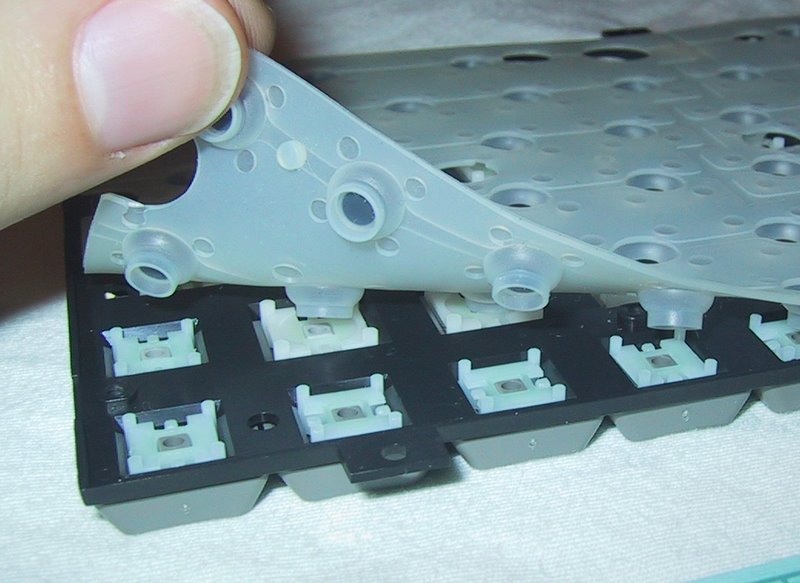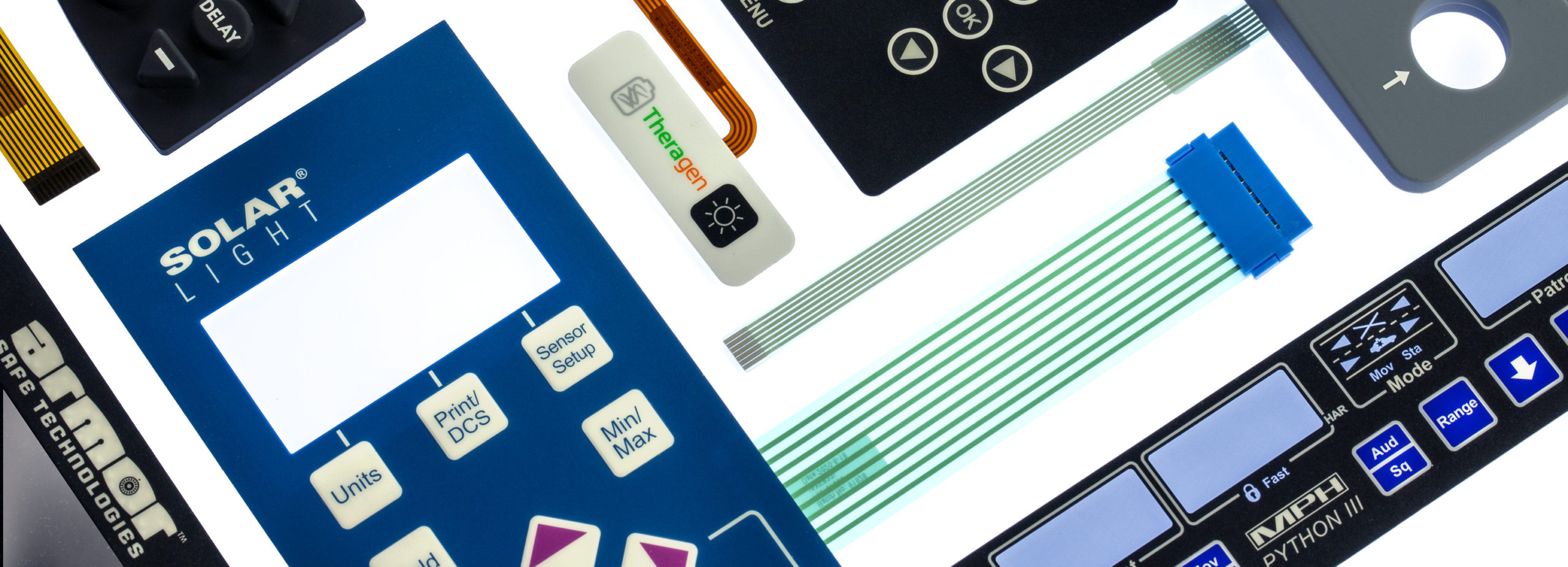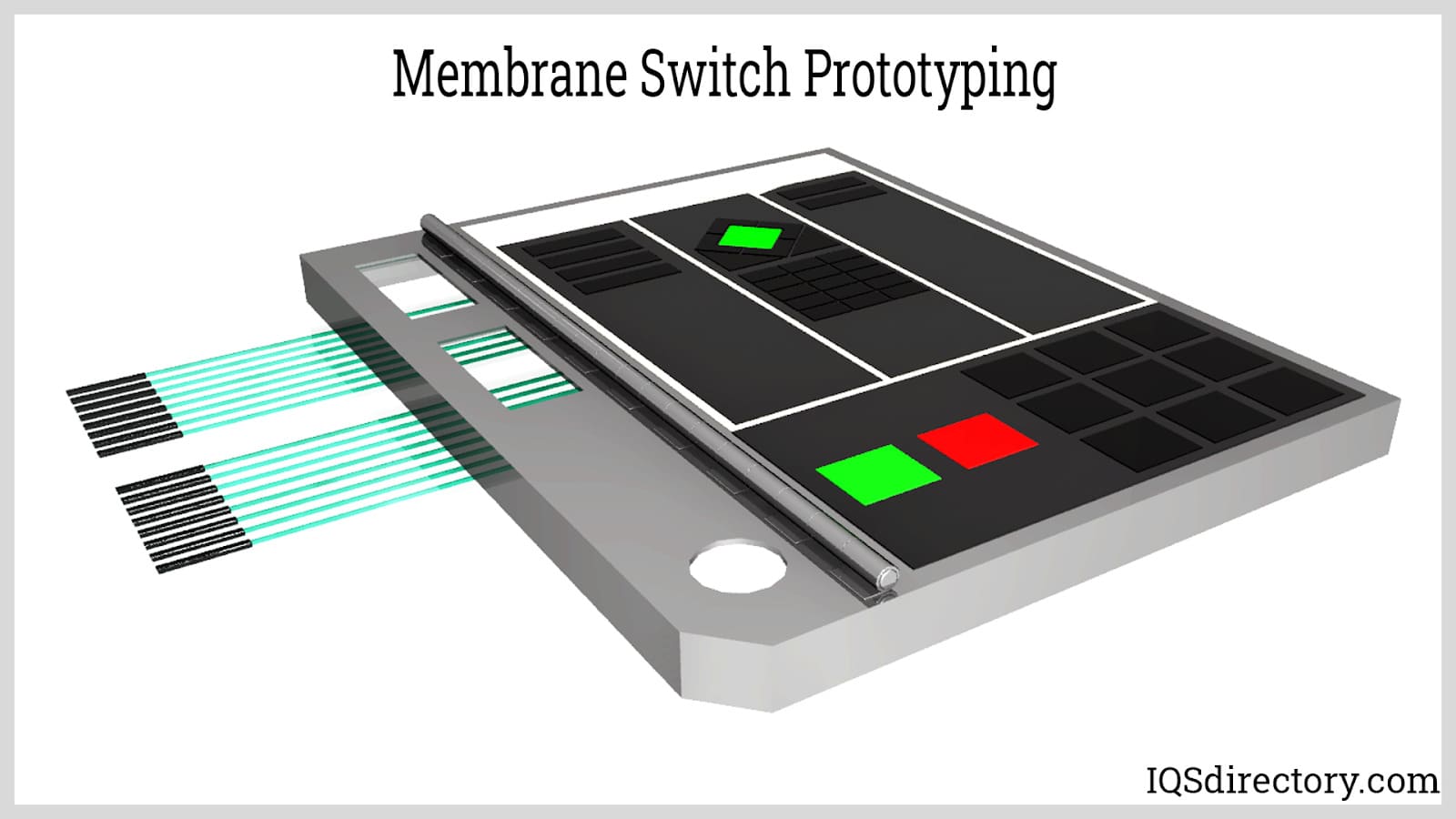How to Choose the Right Membrane Switch for Your Electronics Project
How to Choose the Right Membrane Switch for Your Electronics Project
Blog Article
Membrane Layer Switch Over Technology: The Secret to Reliable and Economical User Interfaces
Membrane layer button technology has actually emerged as a critical element in the layout of individual interfaces, providing both integrity and cost-effectiveness throughout a varied array of applications. As we discover the complex benefits of membrane layer buttons, their capacity for advancement increases inquiries about future applications and evolving fads.
Recognizing Membrane Layer Switch Over Modern Technology
Membrane layer switch technology is a widely made use of user interface service in different electronic tools, supplying a seamless blend of capability and layout. This modern technology includes several layers of materials, generally containing a graphic overlay, spacer layer, and a circuit layer. The graphic overlay presents the user interface aspects, while the spacer layer separates the circuit layer from the overlay till an individual activates a button.
When pressure is put on the overlay, the circuit layer finishes the electric circuit, sending out a signal to the gadget. This mechanism permits numerous configurations, including tactile comments and backlighting options, enhancing customer communication. Membrane switches are normally manufactured using long lasting products such as polyester or polycarbonate, making sure durability and resistance to ecological factors like moisture and dust.
The versatility of membrane layer switches allows their application in diverse sectors, including clinical gadgets, consumer electronic devices, and industrial controls. Their portable layout enables for assimilation into space-constrained environments, providing an efficient interface without compromising aesthetic appeal. Recognizing the complexities of membrane layer button innovation is crucial for makers and designers looking for to develop dependable and reliable human-machine user interfaces.
Key Benefits of Membrane Switches
While various interface solutions exist, membrane switches deal unique benefits that make them a favored selection in many applications. Among the primary benefits is their toughness; membrane buttons are made to endure harsh ecological problems, including dampness, dust, and temperature changes, making certain resilient performance. This strength substantially reduces the requirement for constant substitutes, thereby lowering overall upkeep prices.

Moreover, membrane layer buttons are light-weight and small, making them suitable for applications where space is limited. Their inconspicuous style contributes to a smooth look without endangering performance.
Cost-effectiveness is likewise a remarkable benefit, as the manufacturing process for membrane changes has a tendency to be cheaper compared to standard mechanical buttons. This cost, incorporated with their dependability and convenience of setup, positions membrane layer switches as a practical service for a wide variety of markets seeking efficient and reliable individual interfaces.
Applications Across Different Industries
How do membrane buttons adapt to the diverse needs of various sectors? Membrane layer switch innovation is increasingly acknowledged for its versatility, making it ideal for a vast array of applications across multiple fields.
In customer electronics, membrane buttons offer a read here compact solution for remote controls and home appliances, improving user experience via user-friendly design. In addition, the industrial sector leverages membrane buttons for equipment control panels, gaining from their resistance to rough environments, such as moisture and dirt.
Armed forces and aerospace applications likewise make use of membrane buttons for their reliability and capacity to endure extreme conditions, making certain operational performance in important scenarios. The food and drink industry takes on these buttons for automated systems, where hygiene and convenience of procedure are extremely important (membrane switch). Ultimately, membrane switches are customized to fulfill the special needs of each market, proving their important duty in modern innovation interfaces
Design and Personalization Choices

In the world of membrane layer button modern technology, style and personalization alternatives play a additional reading crucial function in enhancing functionality and individual interaction. These switches can be tailored to meet details functional needs and visual preferences, making them functional components in various applications.
One of the key customization alternatives is the format of the switch itself, which can be developed to accommodate one-of-a-kind interface this contact form and ergonomic considerations. By changing the form, size, and plan of buttons, producers can develop intuitive styles that facilitate simplicity of usage. Additionally, the consolidation of different shades and graphic overlays permits branding and improved visibility, making sure that users can quickly determine functions.
In addition, membrane layer switches can be engineered with numerous responsive comments mechanisms, such as elevated switches or audible clicks, to boost the customer experience. Various products can additionally be picked for sturdiness and ecological resistance, addressing elements such as wetness, temperature level variations, and chemical exposure.
Ultimately, the comprehensive style and customization choices available in membrane layer button modern technology equip organizations to create customized options that not only meet functional requirements however additionally line up with their branding and operational needs.

Future Patterns in Membrane Layer Switches
As membrane layer button modern technology continues to develop, future fads are significantly concentrated on improving individual experience and incorporating innovative functionalities. One significant trend is the assimilation of touch-sensitive and capacitive innovations into traditional membrane layer switches. This development permits even more instinctive interface, giving responsive responses while keeping a streamlined style.
Another arising trend is using eco pleasant products, driven by the growing demand for lasting production techniques. Manufacturers are seeking to decrease their carbon impact by utilizing recyclable substratums and low-impact inks, aligning with worldwide sustainability goals.
Furthermore, the surge of the Web of Points (IoT) is triggering the unification of wise attributes right into membrane layer switches. Enhanced connectivity alternatives will certainly allow gadgets to interact with each other, enabling for seamless combination right into more comprehensive systems.
Additionally, developments in printing modern technologies, such as electronic printing, are enabling for better style versatility and customization. This makes it possible for producers to produce complex designs and vibrant shades cost-effectively.

Conclusion
In final thought, membrane button modern technology represents an important development in user interface layout, using substantial benefits in longevity, modification, and cost-effectiveness. Its extensive applicability across varied sectors highlights its importance in modern-day innovation. As improvements remain to emerge, particularly in touch-sensitive user interfaces and sustainable products, the capacity for membrane layer changes to boost individual experience and functionality continues to be appealing. Proceeded exploration of this technology will likely produce further renovations and broaden its scope in future applications.
Report this page